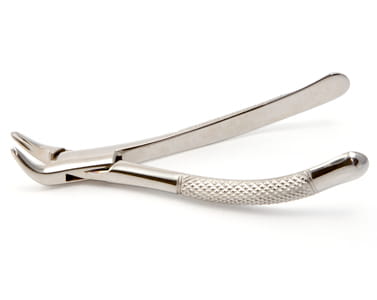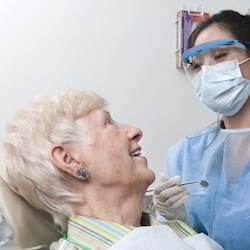
BACKGROUND: Mr V books an emergency appoint at the dental surgery on a Friday morning before a bank holiday. He is ten minutes late for a 15-minute slot and complains of extreme sensitivity in an upper right molar. Mr V reports the pain is short in duration and made worse by cold and sweet things.
Dr S examines the patient and notes a small crack in the tooth. He does not find any teeth TTP, and no swelling or gum problems. The dentist applies desensitising varnish to ease the discomfort and asks Mr V to make an appointment with his regular dentist next week.
That Monday Mr V attends A&E with extreme pain in the upper right jaw and is referred to the dental hospital. Following a clinical examination and taking of appropriate radiographs, a diagnosis of irreversible pulpitis is made.
Treatment options are discussed and Mr V elects to have the tooth extracted. This is completed uneventfully.
A few days later the practice receives a letter of complaint from Mr V. He questions why Dr S did not take a radiograph and diagnose irreversible pulpitis on the Friday, thus sparing him an "agonising weekend". Treatment could have been offered then or at least a referral to the dental hospital.
ANALYSIS/OUTCOME: Dr S contacts MDDUS for advice. A dental advisor reviews the draft text of a response letter. First the dentist apologises for the inconvenience and distress the situation has caused and states that it is practice policy to investigate patient concerns and use that learning to improve services.
Dr S offers his view of the events based on the patient records. He points out that it was unfortunate that Mr V was ten minutes late for a 15-minute appointment slot, leaving only five minutes for assessment and treatment. The records state that Mr V complained of sensitivity in the molar and the dentist noted a small crack in the tooth. Nothing in the consultation suggested irreversible pulpitis and Dr S applied desensitising varnish to assist with the discomfort until further treatment (if necessary) could be undertaken.
Dr S states that the complaint has given him cause to reflect on his clinical practice and how in future he will deal with similar dental emergencies. Mr V is invited to contact the practice if he wants to discuss the matter further – and is also provided contact details for the ombudsman if he is dissatisfied with this response.
Nothing further is heard from Mr V in regard to the matter and he remains a patient at the practice.
KEY POINTS
- Ensure patients are offered advice on how to deal with unresolved or worsening symptoms.
- Respond promptly to formal complaints with a written response setting out how the matter has been investigated and measures to help prevent similar incidents in future.
- A sincere apology or expression of regret will often prevent complaints escalating into a claim or GDC referral.
This page was correct at the time of publication. Any guidance is intended as general guidance for members only. If you are a member and need specific advice relating to your own circumstances, please contact one of our advisers.
Save this article
Save this article to a list of favourite articles which members can access in their account.
Save to library
